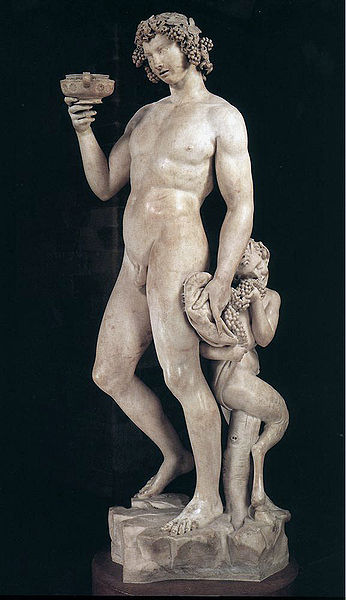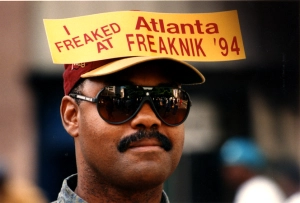
Alcoholics call it a “moment of clarity.” It arrives when a drinker has finally hit rock-bottom– often occurring on the heels of some tragic event, such as getting arrested for a DUI, getting punched in the face during a drunken bar fight, or falling, pissy drunk, from a third-story balcony and into the swimming pool below. It is in this moment that the alcoholic gains a painfully sober perspective on life; one that says, “Try not to kill yourself there, buddy!”
I predict that many will experience this feeling in the coming weeks. Hopefully, it will be under less stressful circumstances than those I’ve mentioned. Perhaps it will sneak up on you as you lie on your back in the communal hotel suite bedroom which you and your friends have conveniently acquired near the beaches of Miami. Or maybe it will strike on the last night of debauchery as you stumble out of a night club and subsequently trip out of your shoes and onto the sandy sidewalk. Whenever it speaks to you, I want you to imagine that voice of reason coming from a particularly unique host. Imagine it whispered by the guy that convinced you to get so inebriated in the first place.
And no, I don’t want you to blame that dude with the visor and the t-shirt with a “clever phrase” across the front, or your peer-pressure-junkie of a friend whose sly grin and pair of over-sized shades she’s been wearing ever since the sun set two hours ago. No, don’t blame them. Blame this guy.

Michelangelo's "Bacchus"
Yeah, this guy. Bacchus, the Roman god of wine and intoxication. After all, it is his spirit that possesses so many young men and women to make the annual migration to the sunny shores of the Florida panhandle in the first place. (And plus– he’s butt naked. You know he must have had something to do with all of this)
Meet the originator of what we’ve modernly come to know as “spring break” in the United States. Historians date the ritual back to ancient times, when Romans celebrated the coming of fertility and awakening during the Spring season, while simultaneously venerating the wine god, Bacchus. Combine these two things, and you’ve got a millennia-long tradition of debauchery.
Origins of a spring festival exist across cultures from all corners of the globe. In the past century, however, what America associates today with the typical spring break experience of young people came into existence during the 1960’s, when college students began flocking to Fort Lauderdale, Florida for a week of fun in the sun at the start of spring.
Some years prior, in 1936, Sam Ingram, the swimming coach at Colgate University, brought his team to Fort Lauderdale to swim in the Olympic-sized Casino Pool. Two years later, the city sponsored a swimmer’s forum in the same location, which attracted a handful of competitors. In the following years, the event gained popularity, and tourism rose substantially within the month of March.
From TIME Magazine’s A Brief History of Spring Break:
“By the free-loving ’70s, Fort Lauderdale’s fun and sun had become decidedly raunchier. With gratuitous PDA and ‘balcony-diving’ — negotiating one’s way from balcony to balcony to get to other floors or rooms, a practice typically performed in a drunken stupor and thus madly dangerous — the norm, many communities began questioning why the heck they had invited such unruly houseguests in the first place. By 1985, some 370,000 students were descending on Fort Lauderdale (or fondly, “Fort Liquordale”) annually…”
Today, spring break festivities have spread to places like Cancun, Jamaica, and the Bahamas, among other stateside and international locations. Celebratory requirements include little other than sun, skin, and alcohol. The concept of “spring break” has been exploited by local business who prepare to cater to the young crowds of tourists ready to spend money, alongside media organizations such as MTV and BET which feature spring break specials in an attempt to capture the unruliness on camera and boost ratings. Careers, like that of Joe Francis, creator of the Girls Gone Wild series, have even launched in large part due to the week-long platform for care-free living that is spring break.
 This year, although I will be taking my first trip to Panama City, Florida, I intend to avoid Bacchus and his influence as much as possible. At least enough to keep the pictures off of Facebook. For those of you with other Spring Break plans, I wholeheartedly hope that you enjoy whatever it is you choose to do. A spring break is never wasted just because you don’t happen to be.
This year, although I will be taking my first trip to Panama City, Florida, I intend to avoid Bacchus and his influence as much as possible. At least enough to keep the pictures off of Facebook. For those of you with other Spring Break plans, I wholeheartedly hope that you enjoy whatever it is you choose to do. A spring break is never wasted just because you don’t happen to be.
Stay safe, and ensure that your moment of clarity occurs during the spring break planning phase rather than from beaneath the porcelain throne!







